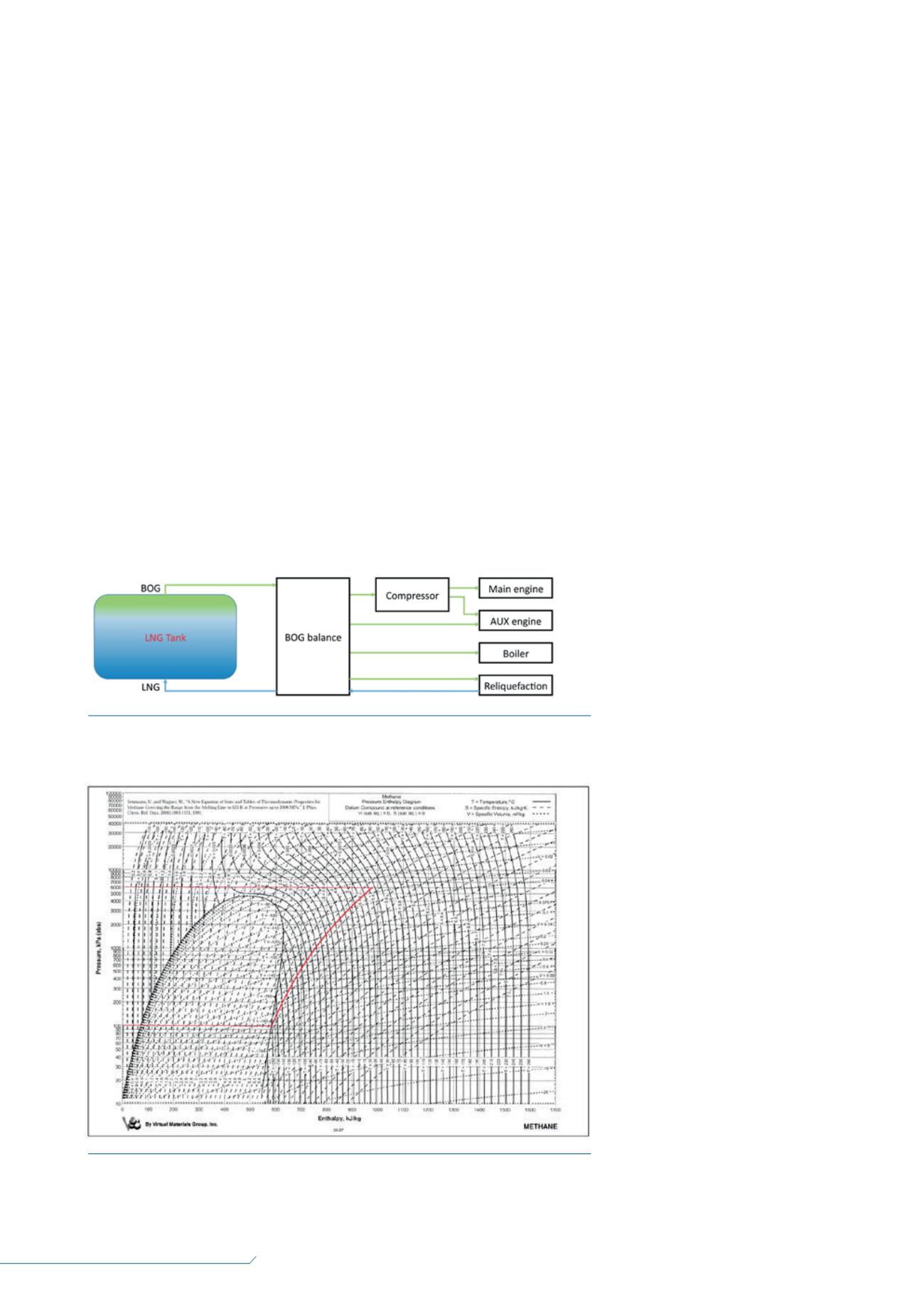
26
LNG
INDUSTRY
SEPTEMBER
2016
The larger volume of gaseous natural gas created by
this BOG will increase the tank pressure. To manage this,
pressure vessels are utilised to contain the pressure. For
longer storage periods, however, the pressure increases
might be too high, which will require alternative solutions
to handle the gas pressure.
Wärtsilä has extensively studied the handling of BOG
on board LNG-fuelled ships. This article is based on these
studies.
Pressure build-up
Pressure build-up depends on several parameters, including
ambient temperature and the amount of LNG in the tank.
Another aspect to consider is stratification, which may cause
a faster pressure rise. Stratification means that the LNG
is divided into layers with the higher density liquid at the
bottom and the lower density liquid on top. When the lower
layer is heated, it cannot evaporate because of the cover.
The densities of the layers are eventually equalised due to
boil-off from the top layer and heat transfer. The warmer
LNG from the bottom rises to the top and evaporates. This
is called rollover and causes a rapid increase in the boil-off
rate (BOR), which is difficult to predict.
Thermal stratification can be eliminated by agitating
the tank, which occurs naturally on gas-fuelled ships due to
the motion of the waves. Agitation of the tank may cause
an opposite reaction when warm LNG is mixed with colder
LNG, since the temperature at the surface will then
decrease and condensate the BOG. The result is a collapse
of pressure, which is followed by saturation at a lower
pressure.
BOG handling requirements
There are various means of handling the pressure build-up
in LNG tanks. One method is to contain the pressure for
the ambient temperature of the fuel. Other methods
include reliquefaction, thermal oxidation, and pressure
accumulation. The IGF code – the international safety
code for ships using gases or other low flashpoint fuels
– also accepts cooling of the fuel in a liquid state. For
reliquefaction, a direct system, where the evaporated gas
is compressed and condensed before being returned to
the tank, is one solution. The other alternative is an indirect
system, where the gas is condensed or cooled with an
external refrigerant, without being compressed.
Apart from handling the maximal BOR in the tank, the
selected method also needs to cope with zero or low BORs.
In the case of failure, the system must provide a redundant
system that can maintain the tank pressure. Venting gas to
the atmosphere is not an alternative for pressure control,
and is only allowed in emergency
situations.
Reliquefaction
Several licensed refrigeration
processes are available for the
liquefaction of natural gas. These
processes use one or more cycles
in order to imitate the cooling
curve of natural gas. A good match
of the curve will give the process
high efficiency and, therefore, low
energy consumption. Conversely,
a low temperature difference
between the refrigerant and the gas
will demand a larger heat exchange
area. Refrigeration process design
is about optimising the number of
cycles, the refrigerant composition,
and the heat exchange area.
The result depends on whether
simplicity, efficiency, a compact
footprint, or low cost is the key
boundary condition. Depending
on which refrigeration cycle is
used, liquefaction processes can
be divided into three categories:
cascade cycle, mixed refrigerant
(MR), and expander cycle.
Cascade cycle
The cascade process is defined
by several cascaded refrigeration
cycles, based on the reversed
Rankine cycle, using pure two-phase
refrigerants. The idea is to reduce
Figure 2.
Illustration of an isochoric temperature increase of methane from -162°C at
atmospheric pressure to 45°C (upper design temperature for worldwide service). The result is
a pressure of approximately 60 bar.
Figure 1.
Simplified system layout for boil-off gas (BOG) handling, when using two-stroke
main engines and four-stroke auxiliary engines. Ideally, consumption should match boil-off
rate (BOR), resulting in a BOG balance of zero.


